Simulation dforce outfits keeps poking thru
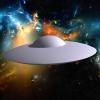 wildbillnash
Posts: 757
wildbillnash
Posts: 757
Can anyone tell me what's going wrong here? I have a constant problem with dforce clothing. They keep not simulating right. For instance. I uploaded 4 images of an example. I did a partial pose of a woman leaning back and almost losing her balance of a stole. The first image is before I press the simulation button. The second is right after. The third is a few moments later. And the fourth is what I end up with. Any ideas out there? Thanks in advance for any help.
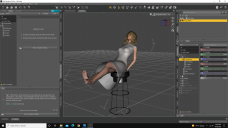

Image 01.png
1920 x 1080 - 429K
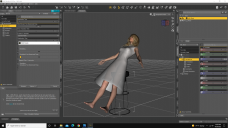

Image 02.png
1920 x 1080 - 472K
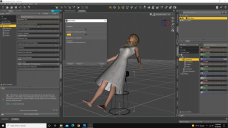

Image 03.png
1920 x 1080 - 484K
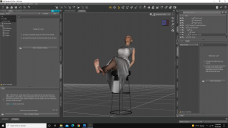

Image 04.png
1920 x 1080 - 345K


Comments
Start with the stool moved back, then use the TImeline to slide it forward under her, pushing the skirt in front of it, and do a PlayRange simulation. You need toa void any intersection at the start of the simulation.
I'll try that. But one thing I forgot to mention is when I start the simulation, she moves forward just a little but still angled like in the second image. I thought she should be standing upright in a neutral position after clicking simulation.Then move back onto the stool as she assumes the pose.
Start From Memorised Pose ignores chnages made to the figure node.
Sorry, I don't follow you.
Just tried an animation and the dress exploded.
If you moved the character by selecting the figure node then that will not zero (or otherwise go to the memorised state) when the simulation starts.
and there was nothing intersecting the dress, and nothing passed through the dress during the simulation?
I get the second part, but not the first part. I pose the figure either next to a piece of furniture or on it. The skirt always pokes through them before simulation. I don't know how to move the skirt 'before simulation' so as not to go through an item.
As for the first part, this is a case of not knowing all the jargon. What is a 'figure node'? And what does 'zero' have to do with it?
I just made another pose with the same dress. The model was leaning against a bed railing. I turned off the "Start Bones From Memorized Pose" and the simulation worked fine because the skirt was angled forward away from the frame, though the model didn't move at all. But that won't work with her sitting on a stool because the skirt will always start while going through the stool. Can you supply a link to a video of how to do the animation thing you mentioned, or can you just give me the steps of doing it?
See image:
Video tutorial
cgidesign, sorry. I'm not following you. First, are you saying the Start Bones from Memorized Pose should be on? And what do you mean by "You need to change e.g. the hip mode instead"?
barbult, thanks for the video. I played around with the timeline. First, the image stayed in the slanted position, rotated x-axis -39.01 degrees. When I try to simulate it stays there. I pushed back the stool using the Translate slider. I used the timeline slider to see what the stool will do. It went past her then came back to the position where it needs to be. For instance, I slide it back to Z= -100. I slide the animation and the stool moves to Z= 4.9. I keep sliding and it ends up at Z=0. Meanwhile, the figure stays at X Rotate= -39.01. Any ideas here?
In general you have three options to do a simulation:
A: Static simulation
B: Dynamic simulation by Start Bones from Memorized Pose
C: Dynamic simulation by animation timeline
A:
This means your character is not moving or changing its pose during simulation. You pose your character and DS will use this pose during the whole simulation.
B:
This means you pose your character, but when you start the simulation DS resets your character to its "memorized" default pose and then animates from this default pose to your set final pose. This option is handy because you don't need to fiddle with the timeline. You just set your desired end pose and DS automatically does the animation from default pose to end pose for you.
C:
You set a timeline animation. You set the start pose at a timeline position, you set the end pose at later timeline position. DS will then simulate from this start pose to the end pose. This is the most complicated way to simulate but also the one that gives you the most control.
Timeline is 30 frames long - in case of "Use Timeline Play Range" DS will simulate from frame 1 to frame 30.
I set a custom frame range - DS will simulate from frame 1 to frame 26.
When you use option B, DS is not resetting anything that you changed in the Root (or Figure) node. It only resets changes made to the child nodes like HIP, ARMS etc. Just try it out with a simple scene. It will quickly become obvious what this option is doing.
Example:
This is my memorized default pose.
This is the final pose I made. The woman was moved by the "HIP" node not by the "Genesis 8 Female" node.
When I use "start bones from memorized pose" and click simulate, DS will reset the women to the memorized pose and simulate from that to the final pose I made. No need to fiddle with the timeline in this case.
This is the result (during the sim some poke trough happens but that is gone at the end of the sim):
Sim settings:
Anything that is in the scene and not invisible to simulation, or selected and not invisible to simulation if simulating selected objects, is a static element - the simulation will not modify it but it will be a collision target. You would generally apply a static modifier only if you wanted to adjust the properties (e.g. friction), otherwise it is redundant. It has nothing to do with whether the item is moving, from other modifiers such as bones or dForms.
A dynamic modifier does change the shape by simulating it - and it is the same modifier regardless of whether the simulation is a single frame or play range.
Thanks for the info, you two. But no one has addressed the main problem. Richard, when I use option B my figure does NOT stand up in the original position. If you look at my image 02 she starts off at an angle which throws everything off. I've tried Option C a couple of times but as I mentioned earlier my stool slides 'past' the figure before returning to where it needs to go. I'll try again with Option C.
It's a ittle tricky to give specific troubleshooting. With the stool, are you sure it has only two keyframes, one for the starting position at frame 0 and one for the final position in the last frame? Any other keys, or keys in other palces, may cause issues due to interpolation. You might want to select the keys in the Timeline and set the interpolation type to Linear - that way the stool will simply slide into position.
You are still missing the information about Root (Figure Node) versus child node.
Your Figure (Maya) is translated and rotated by its root node. The rotation is the issue in your case. It does not get reset by "Start From Memorized Pose". You need to set it to 0.